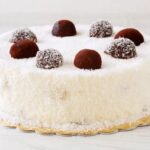Are you wondering how to store cake before decorating? The way in which a cake is stored before decorating can significantly impact the final result.
Whether you are a professional baker or a home cook, proper storage techniques are essential for preserving the cake’s flavor, texture, and overall quality. In this article, we will explore the best practices for storing cakes before decorating, including cooling methods, wrapping techniques, refrigeration versus room temperature options, freezing possibilities, storage duration guidelines, preventing condensation upon removal from storage, and testing freshness.
One of the most crucial steps in preparing a cake for decorating is cooling it properly before storing. Improper cooling can result in condensation and affect the texture of the cake. We will provide tips on how to cool a cake using wire racks and how to avoid direct sunlight or heat sources that may compromise its quality.
In addition to proper cooling, effective wrapping techniques are essential for maintaining the freshness of the cake. We will outline detailed instructions on how to wrap the cake using plastic wrap, foil, or airtight containers to prevent it from drying out. Furthermore, we will discuss the pros and cons of refrigerating the cake versus leaving it at room temperature and explore freezing options for those who wish to store their cakes for an extended period before decorating.
Best Practices for Cooling
After baking a delicious cake, it’s crucial to properly cool it before decorating. This step is essential to ensure that the cake maintains its structure and doesn’t become soggy or misshapen during the decorating process. Proper cooling also plays a significant role in maintaining the cake’s freshness, flavor, and overall quality. In this section, we will explore the best practices for cooling a cake, including tips on using wire racks and avoiding direct sunlight or heat sources.
One of the best ways to cool a freshly baked cake is by using wire racks. Placing the cake on a wire rack allows air to circulate around the entire cake, promoting even cooling and preventing moisture buildup. This method helps the cake cool more quickly and effectively than simply leaving it on a flat surface. Additionally, it reduces the risk of condensation forming underneath the cake, which can impact its texture and moisture content.
When cooling a cake, it’s important to avoid placing it in direct sunlight or near heat sources such as stovetops, ovens, or warm appliances. Direct exposure to heat or sunlight can cause uneven cooling and may lead to undesirable changes in texture and flavor. It’s best to place the cake in a cool, dry area with good air circulation to allow it to cool naturally without any external influences that could compromise its quality.
Properly cooling the cake before storing is an essential step that sets the foundation for successful decorating. By following these best practices for cooling, you can ensure that your cake maintains its freshness and structural integrity while preparing it for storage and decoration.
| Best Practices for Cooling | Tips |
|---|---|
| Use Wire Racks | Allows air circulation for even cooling |
| Avoid Sunlight/Heat Sources | Prevents uneven cooling and undesirable texture/flavor changes |
Wrapping Techniques
When it comes to storing a cake before decorating, proper wrapping techniques are crucial to maintaining freshness and preventing the cake from drying out. Whether you choose to use plastic wrap, foil, or airtight containers, the way you wrap the cake can significantly impact its quality when it comes time to decorate it. Below are detailed instructions on how to effectively wrap a cake for storage.
Plastic Wrap
When using plastic wrap to store your cake before decorating, it’s essential to ensure that the entire cake is tightly sealed. Start by placing the cake on a flat surface and carefully wrap the entire cake with several layers of plastic wrap. Make sure there are no gaps or exposed areas where air can enter. This will help prevent the cake from drying out while also protecting it from absorbing any unwanted odors from the refrigerator.
Foil
Alternatively, you can use foil to wrap your cake for storage. The key with foil is to ensure that it is wrapped securely around the entire cake. Similar to plastic wrap, multiple layers may be necessary to create an airtight seal. Before wrapping in foil, consider placing parchment paper over the top of the cake to provide an extra layer of protection against moisture loss.
Airtight Containers
For those who prefer not to use plastic wrap or foil, airtight containers can also be used for storing cakes before decorating. When using this method, make sure that the container is clean and completely dry before placing the cake inside. Ensure that the lid is closed tightly and consider placing a piece of parchment paper on top of the cake before sealing for added protection.
By following these detailed instructions for wrapping techniques, you can store your cakes effectively and maintain their freshness until you’re ready to begin decorating them. Regardless of which method you choose, proper wrapping will ensure that your cakes remain moist and tasty when it’s time for that final decorative touch.
Refrigeration vs Room Temperature
Refrigeration and room temperature storage are two common options for storing a cake before decorating, each with its own set of pros and cons. When considering how to store cake before decorating, it’s important to understand the impact that temperature can have on both flavor and texture.
Refrigeration is often seen as the go-to method for storing cakes, as the cooler temperatures can help maintain freshness and prevent spoilage. However, refrigerating a cake can also lead to changes in texture, making it firmer and potentially denser. Additionally, certain types of frosting may not hold up well under refrigeration, leading to potential issues with appearance and consistency once the cake is decorated.
On the other hand, storing a cake at room temperature allows it to maintain its natural texture and flavor profile. However, this method is more susceptible to spoilage and can result in a shorter shelf life for the cake. Room temperature storage also runs the risk of exposure to heat or direct sunlight, which can lead to drying out or other quality issues.
It’s important to consider the type of cake being stored, as well as any fillings or frosting used in the recipe when deciding between refrigeration and room temperature storage. In general, unfrosted cakes without perishable fillings can safely be stored at room temperature for 1-2 days without significant impact on quality. However, cakes with perishable fillings like dairy or fruit-based toppings should be refrigerated due to food safety concerns.
| Storage Method | Pros | Cons |
|---|---|---|
| Refrigeration | Maintains freshness and prevents spoilage. | Can lead to changes in texture and affect certain types of frosting. |
| Room Temperature | Maintains natural texture and flavor profile. | Susceptible to spoilage and exposure to heat or direct sunlight. |
Freezing Options
Freezing a cake before decorating can be a convenient option, especially for those who like to prepare in advance. When done correctly, freezing the cake can help preserve its freshness and flavor, allowing decorators to tackle other preparations without the worry of the cake spoiling. However, it is important to follow proper freezing and thawing methods to ensure the best results.
Proper Freezing Methods
To freeze a cake before decorating, it is crucial to start with a completely cooled cake. Once the cake has been baked and cooled on wire racks, it should be wrapped tightly in plastic wrap to seal out any air and prevent freezer burn. After wrapping the cake securely, it can then be placed in an airtight container or heavy-duty aluminum foil for added protection.
Thawing Techniques
When it comes time to decorate the cake, proper thawing is essential to maintain its texture and flavor. The frozen cake should be removed from the freezer and placed in the refrigerator overnight to thaw gradually. This allows the cake to thaw evenly and reduces the risk of condensation forming on the surface. Once completely thawed, the cake can be unwrapped and brought to room temperature before decorating.
Important Considerations
It’s important to note that not all types of cakes are suitable for freezing before decorating. Cakes with delicate textures or fillings may not freeze as well as sturdier cakes. Additionally, certain frostings or fillings may not hold up well during freezing and thawing processes. Before deciding to freeze a cake before decorating, it’s important to consider these factors and choose a recipe that will yield successful results when frozen.
Overall, freezing a cake before decorating can be a practical solution for those looking to save time or prepare ahead of schedule. By following proper freezing and thawing methods, decorators can produce beautifully decorated cakes with no compromise on taste or texture.
Storage Duration
When it comes to storing a cake before decorating, understanding how long it can safely be stored is essential to maintaining its freshness and flavor. The duration of storage can vary based on factors such as the type of frosting used, the ingredients in the cake, and the ambient temperature. By following guidelines for storage duration, you can ensure that your cake remains at its best for when you’re ready to decorate and serve it.
For cakes with buttercream or cream cheese frosting, it is generally safe to store them at room temperature for 1-2 days. However, if your kitchen is particularly warm or humid, refrigeration may be necessary to prevent the frosting from melting or becoming too soft.
On the other hand, fondant-covered cakes can typically be stored at room temperature for 2-3 days before decorating. It’s important to consider any perishable fillings or components within the cake, as they may impact the overall storage duration.
In addition to frosting type and ingredients, the way in which the cake is wrapped and stored will also affect its shelf life. Cakes that are wrapped tightly in plastic wrap or aluminum foil and placed in airtight containers will retain their freshness for a longer period compared to those left exposed to air. Whether refrigerating or storing at room temperature, proper wrapping techniques can help extend the shelf life of your cake before decorating.
Understanding these guidelines will allow you to plan ahead and ensure that your cake is fresh and delicious when it’s time to add those final decorative touches. Remember “how to store cake before decorating“? These guidelines can greatly influence how long your cake stays fresh.
Preventing Condensation
When it comes to storing a cake before decorating, preventing condensation is crucial to maintaining the quality and integrity of the cake. Condensation can lead to moisture build-up, which can affect the texture and flavor of the cake. Here are some tips for preventing condensation when removing the cake from storage:
1. Gradual Thawing: If you have chosen to freeze the cake before decorating, it’s important to thaw it properly to prevent condensation. Gradually thawing the cake in the refrigerator is the best method, as it allows for a slow and controlled process that reduces the risk of condensation forming on the surface of the cake.
2. Proper Unwrapping Techniques: When removing the cake from storage, whether it has been refrigerated or frozen, it’s important to use proper unwrapping techniques to minimize condensation. If using plastic wrap or foil, carefully remove these layers without allowing any moisture to come into contact with the cake. For cakes stored in airtight containers, open them slowly and allow any built-up moisture to evaporate before fully exposing the cake.
3. Room Temperature Adjustment: Once unwrapped, it’s essential to allow enough time for the cake to adjust to room temperature before beginning the decorating process. This will help prevent any remaining moisture on the surface of the cake from affecting its appearance and texture.
By following these tips for preventing condensation when removing a cake from storage, you can ensure that your hard work in baking and storing your cake pays off in a beautifully decorated final product.
– End of Section –
Testing Freshness
In conclusion, properly storing a cake before decorating is crucial for achieving the best possible results. From the initial cooling process to the final inspection of freshness, each step plays a significant role in preserving the flavor and texture of the cake. By following best practices for cooling, utilizing proper wrapping techniques, and considering refrigeration or freezing options, bakers can ensure that their cakes remain fresh and delicious until it’s time to decorate.
One key consideration when storing a cake before decorating is the duration for which it will be stored. Factors such as frosting type and ingredients can impact how long a cake can safely be stored without compromising its quality. Whether choosing to refrigerate, freeze, or leave the cake at room temperature, understanding how these storage options can affect flavor and texture is essential in maintaining freshness.
When it comes time to test the freshness of the stored cake before decorating, bakers can rely on simple methods such as inspecting texture and aroma. These cues can provide valuable insight into whether the cake has maintained its quality during storage or if any adjustments need to be made before moving forward with decorating.
Ultimately, by paying attention to these details and implementing best practices for storing cakes before decorating, bakers can ensure that their finished creations are not only visually stunning but also incredibly delicious.

Welcome to my blog about home and family. This blog is a place where I will share my thoughts, ideas, and experiences related to these important topics. I am a stay-at-home mom with two young children. I hope you enjoy reading it! and may find some helpful tips and ideas that will make your home and family life even better!





